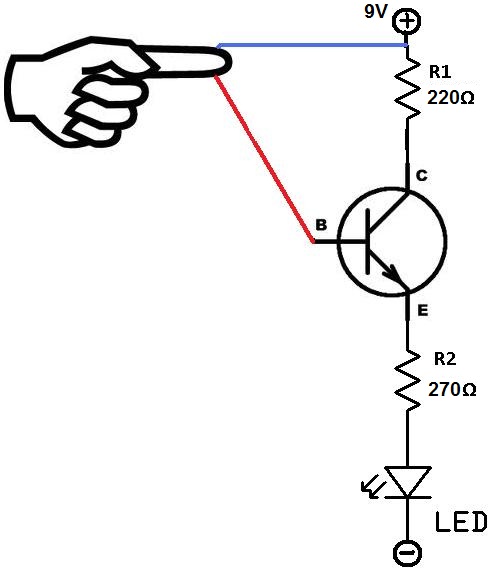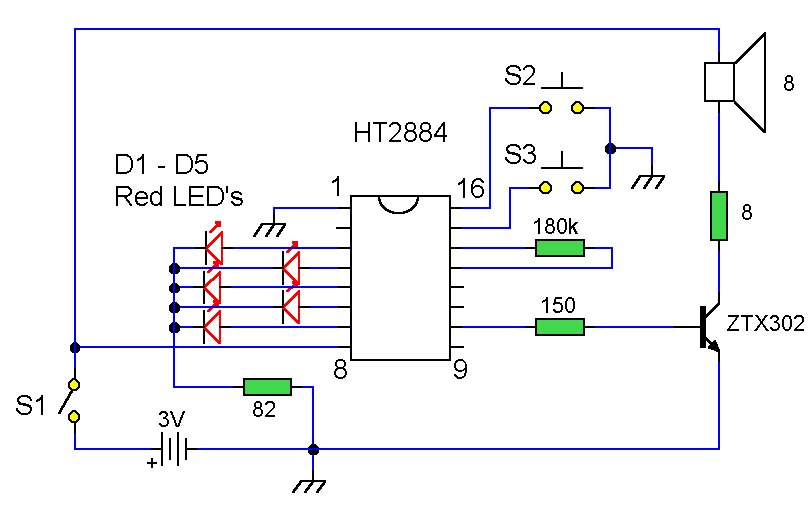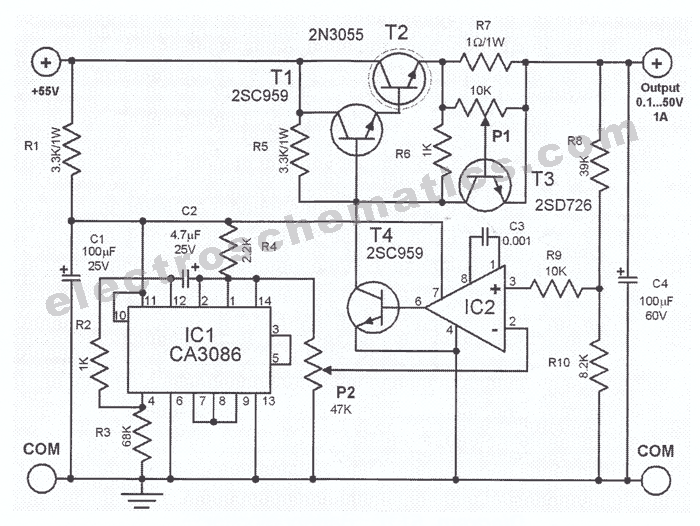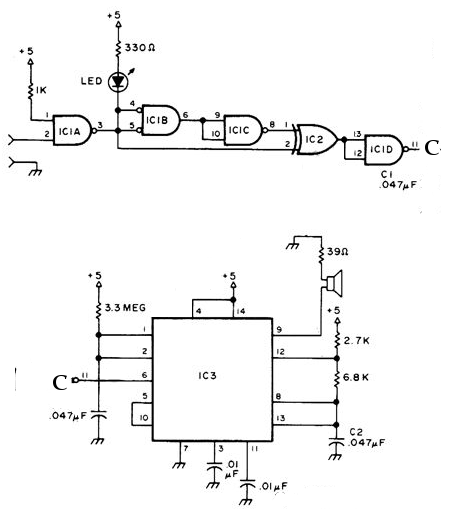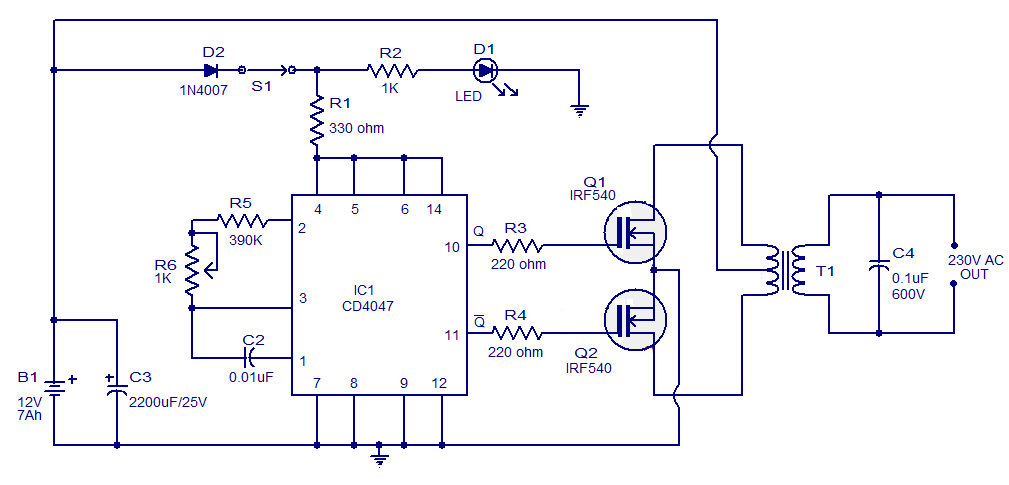
Video Preamp Circuit
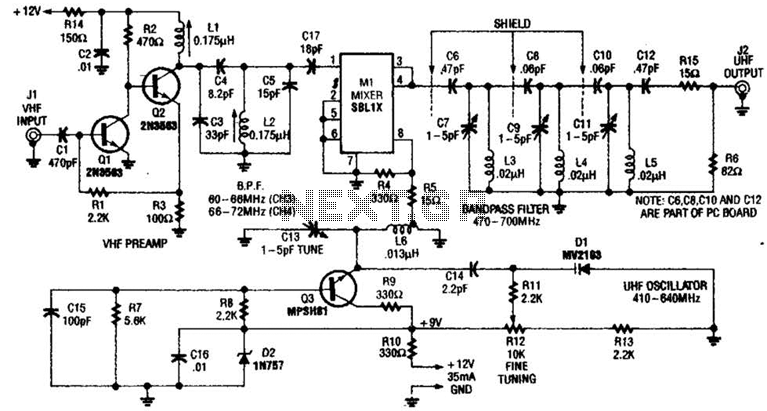
An NE592 or LM733 is utilized as a general-purpose video amplifier in this schematic. J2 and J3 deliver two anti-phase outputs. R2 functions as a gain control. The bandwidth is approximately 100 MHz.
The NE592 and LM733 are operational amplifiers specifically designed for high-frequency applications, making them suitable for video amplification tasks. The configuration of J2 and J3 allows for differential output signals, which can be advantageous in applications requiring noise cancellation or improved signal integrity. The anti-phase outputs can be further processed or utilized in differential signaling environments.
R2, serving as a gain control resistor, plays a critical role in adjusting the amplification factor of the video signal. By varying the resistance value of R2, the gain can be fine-tuned to meet the requirements of the specific application, ensuring optimal signal quality and preventing distortion.
The bandwidth of approximately 100 MHz indicates that this amplifier can handle a wide range of video frequencies, making it suitable for both standard and high-definition video signals. This characteristic is essential in ensuring that the amplifier can accurately reproduce the fast-changing signals typically found in video applications without introducing significant phase shifts or attenuation.
In summary, this schematic effectively employs the NE592 or LM733 to achieve high-performance video amplification with adjustable gain and differential output capabilities, suitable for a variety of video processing applications. An NE592 or LM733 is used as a general-purpose video amplifier in this schematic. J2 and J3 provide two anti-phase outputs. R2 is a gain control. The bandwidth is about 100 MHz.
The NE592 and LM733 are operational amplifiers specifically designed for high-frequency applications, making them suitable for video amplification tasks. The configuration of J2 and J3 allows for differential output signals, which can be advantageous in applications requiring noise cancellation or improved signal integrity. The anti-phase outputs can be further processed or utilized in differential signaling environments.
R2, serving as a gain control resistor, plays a critical role in adjusting the amplification factor of the video signal. By varying the resistance value of R2, the gain can be fine-tuned to meet the requirements of the specific application, ensuring optimal signal quality and preventing distortion.
The bandwidth of approximately 100 MHz indicates that this amplifier can handle a wide range of video frequencies, making it suitable for both standard and high-definition video signals. This characteristic is essential in ensuring that the amplifier can accurately reproduce the fast-changing signals typically found in video applications without introducing significant phase shifts or attenuation.
In summary, this schematic effectively employs the NE592 or LM733 to achieve high-performance video amplification with adjustable gain and differential output capabilities, suitable for a variety of video processing applications. An NE592 or LM733 is used as a general-purpose video amplifier in this schematic. J2 and J3 provide two anti-phase outputs. R2 is a gain control. The bandwidth is about 100 MHz.
